#story telling
Text
Okay, let me tell you a story:
Once upon a time, there was a prose translation of the Pearl Poet’s Sir Gawain and the Green Knight. It was wonderfully charming and lyrical and perfect for use in a high school, and so a clever English teacher (as one did in the 70s) made a scan of the book for her students, saved it as a pdf, and printed copies off for her students every year. In true teacher tradition, she shared the file with her colleagues, and so for many years the students of the high school all studied Sir Gawain and the Green Knight from the same (very badly scanned) version of this wonderful prose translation.
In time, a new teacher became head of the English Department, and while he agreed that the prose translation was very wonderful he felt that the quality of the scan was much less so. Also in true teacher tradition, he then spent hours typing up the scan into a word processor, with a few typos here and there and a few places where he was genuinely just guessing wildly at what the scan actually said. This completed word document was much cleaner and easier for the students to read, and so of course he shared it with his colleagues, including his very new wide-eyed faculty member who was teaching British Literature for the first time (this was me).
As teachers sometimes do, he moved on for greener (ie, better paying) pastures, leaving behind the word document, but not the original pdf scan. This of course meant that as I was attempting to verify whether a weird word was a typo or a genuine artifact of the original translation, I had no other version to compare it to. Being a good card-holding gen zillenial I of course turned to google, making good use of the super secret plagiarism-checking teacher technique “Quotation Marks”, with an astonishing result:
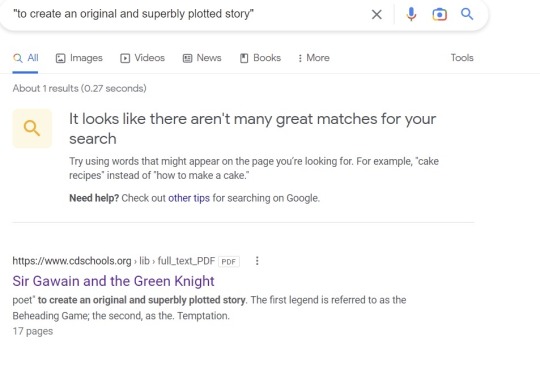
By which I mean literally one result.
For my purposes, this was precisely what I needed: a very clean and crisp scan that allowed me to make corrections to my typed edition: a happily ever after, amen.
But beware, for deep within my soul a terrible Monster was stirring. Bane of procrastinators everywhere, my Curiosity had found a likely looking rabbit hole. See, this wonderfully clear and crisp scan was lacking in two rather important pieces of identifying information: the title of the book from which the scan was taken, and the name of the translator. The only identifying features were the section title “Precursors” (and no, that is not the title of the book, believe me I looked) and this little leaf-like motif by the page numbers:
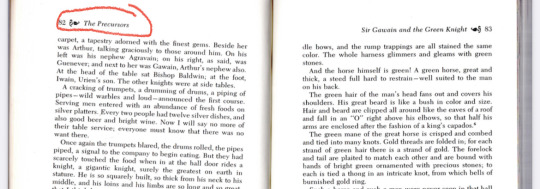
(Remember the leaf. This will be important later.)
We shall not dwell at length on the hours of internet research that ensued—how the sun slowly dipped behind the horizon, grading abandoned in shadows half-lit by the the blue glow of the computer screen—how google search after search racked up, until an email warning of “unusual activity on your account” flashed into momentary existence before being consigned immediately and with some prejudice to the digital void—how one third of the way through a “comprehensive but not exhaustive” list of Sir Gawain translators despair crept in until I was left in utter darkness, screen black and eyes staring dully at the wall.
Above all, let us not admit to the fact that such an afternoon occurred not once, not twice, but three times.
Suffice to say, many hours had been spent in fruitless pursuit before a new thought crept in: if this book was so mysterious, so obscure as to defeat the modern search engine, perhaps the answer lay not in the technologies of today, but the wisdom of the past. Fingers trembling, I pulled up the last blast email that had been sent to current and former faculty and staff, and began to compose an email to the timeless and indomitable woman who had taught English to me when I was a student, and who had, after nearly fifty years, retired from teaching just before I returned to my alma mater.

After staring at the email for approximately five or so minutes, I winced, pressed send, and let my plea sail out into the void. I cannot adequately describe for you the instinctive reverence I possess towards this teacher; suffice to say that Ms English was and is a woman of remarkable character, as much a legend as an institution as a woman of flesh and blood whose enduring influence inspired countless students. There is not a student taught by Ms. English who does not have a story to tell about her, and her decline in her last years of teaching and eventual retirement in the face of COVID was the end of an era. She still remembers me, and every couple months one of her contemporaries and dear friends who still works as a guidance counsellor stops me in the hall to tell me that Ms. English says hello and that she is thrilled that I am teaching here—thrilled that I am teaching honors students—thrilled that I am now teaching the AP students. “Tell her I said hello back,” I always say, and smile.
Ms. English is a legend, and one does not expect legends to respond to you immediately. Who knows when a woman of her generation would next think to check her email? Who knows if she would remember?
The day after I sent the email I got this response:
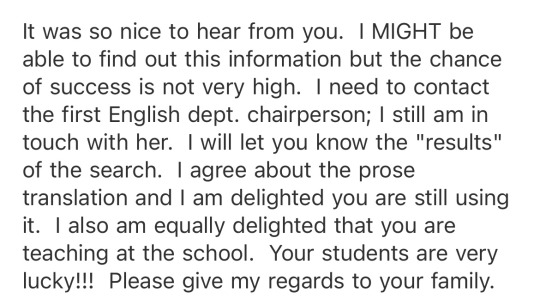
My friends, I was shaken. I was stunned. Imagine asking God a question and he turns to you and says, “Hold on one moment, let me check with my predecessor.”
The idea that even Ms. English had inherited this mysterious translation had never even occurred to me as a possibility, not when Ms. English had been a faculty member since the early days of the school. How wonderful, I thought to myself. What a great thing, that this translation is so obscure and mysterious that it defeats even Ms. English.
A few days later, Ms. English emailed me again:

(I had, in fact searched through both the English office and the Annex—a dark, weirdly shaped concrete storage area containing a great deal of dust and many aging copies of various books—a few days prior. I had no luck, sadly.)
At last, though, I had a title and a description! I returned to my internet search, only to find to my dismay that there was no book that exactly matched the title. I found THE BRITISH TRADITION: POETRY, PROSE, AND DRAMA (which was not black and the table of contents I found did not include Sir Gawain) and THE ENGLISH TRADITION, a super early edition of the Prentice Hall textbooks we use today, which did have a black cover but there were absolutely zero images I could find of the table of contents or the interior and so I had no way of determining if it was the correct book short of laying out an unfortunate amount of cold hard cash for a potential dead end.
So I sighed, and relinquished my dreams of solving the mystery. Perhaps someday 30 years from now, I thought, I’ll be wandering through one of those mysterious bookshops filled with out of print books and I’ll pick up a book and there will be the translation, found out last!
So I sighed, and told the whole story to my colleagues for a laugh. I sent screenshots of Ms. English’s emails to my siblings who were also taught by her. I told the story to my Dad over dinner as my Great Adventure of the Week.
…my friends. I come by my rabbit-hole curiosity honestly, but my Dad is of a different generation of computer literacy and knows a few Deep Secrets that I have never learned. He asked me the title that Ms. English gave me, pulled up some mysterious catalogue site, and within ten minutes found a title card. There are apparently two copies available in libraries worldwide, one in Philadelphia and the other in British Columbia. I said, “sure, Dad,” and went upstairs. He texted me a link. Rolling my eyes, I opened it and looked at the description.
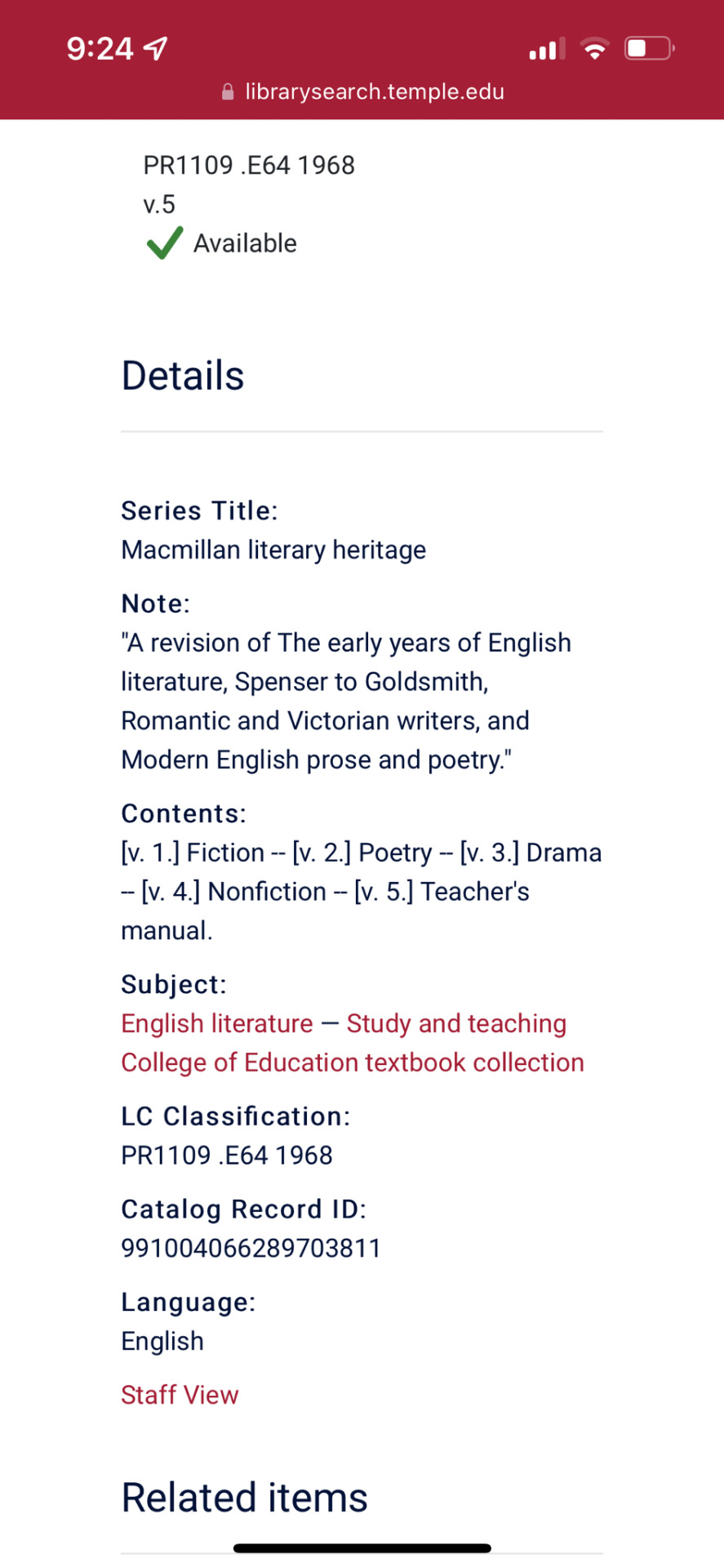
Huh, I thought. Four volumes, just like Ms. English said. I wonder…
Armed with a slightly different title and a publisher, I looked up “The English Tradition: Fiction macmillan” and the first entry is an eBay sale that had picture of the interior and LO AND BEHOLD:

THE LEAF. LOOK AT THE LEAF.
My dad found it! He found the book!!
Except for one teensy tiny problem which is that the cover of the book is uh a very bright green and not at all black like Ms. English said. Alas, it was a case of mistaken identity, because The English Tradition: Poetry does have a black cover, although it is the fiction volume which contains Sir Gawain and the Green Knight.
And so having found the book at last, I have decided to purchase it for the sum of $8, that ever after the origins of this translation may once more be known.
In this year of 2022 this adventure took place, as this post bears witness, the end, amen.
(Edit: See here for part 2!)
#sir gawain and the green knight#translations#internet research#english literature#teaching things#dads are the best#long post#story telling#I STILL don’t know the name of the translator but I WILL find out#obscure books
21K notes
·
View notes
Text
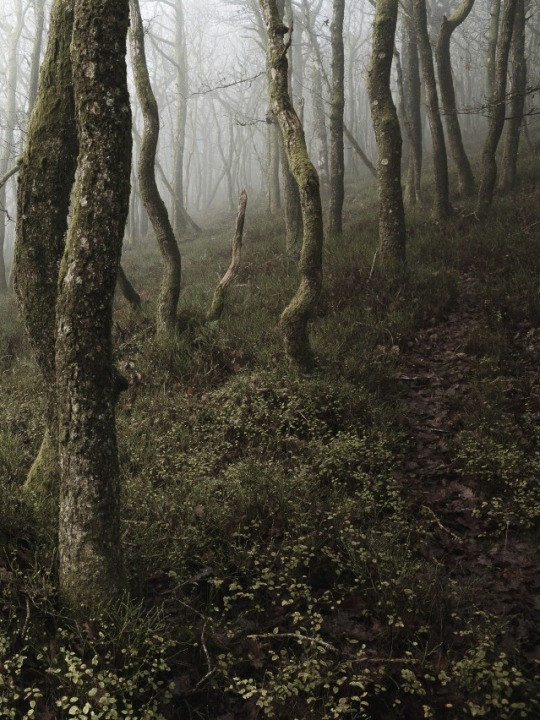
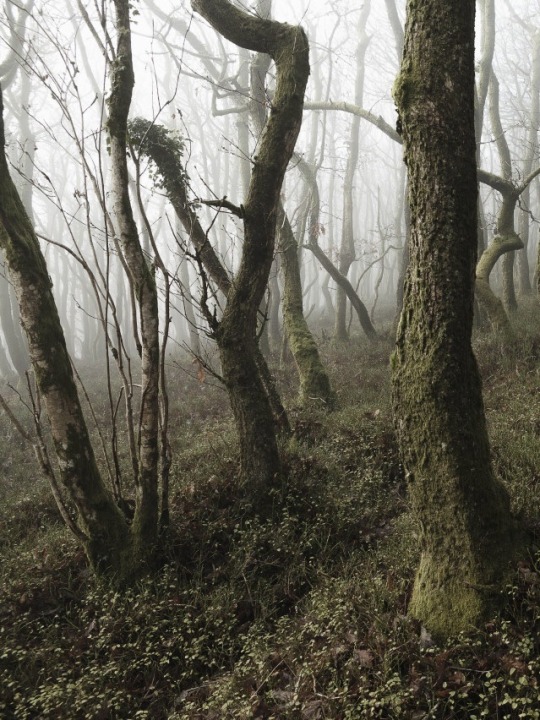
The Great Wood, Ramscombe
Photographed by Freddie Ardley - instagram
#photographers on tumblr#landscape#photography#artists on tumblr#travel#nature#art#beauty#england#uk#forest#fog#trees#moss#green#dark#peace#lit#story telling
2K notes
·
View notes
Text
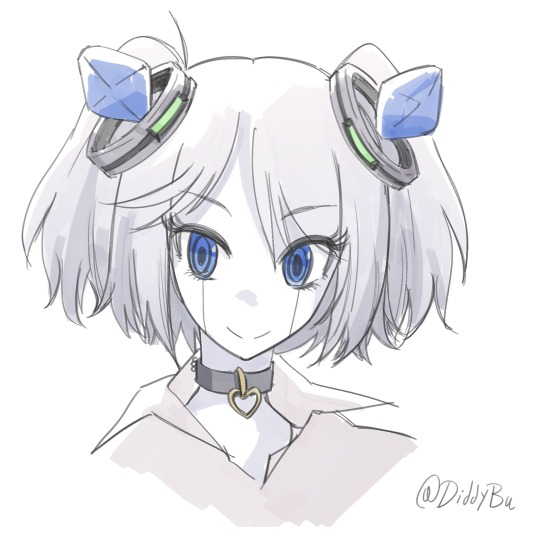


#character design#illustration#android#gynoid#digital#angelcore#angel wings#story#story telling#character art
853 notes
·
View notes
Text
The things you create don’t have to make sense! They can be messy and wild! They can be confusing and strange! They can be ugly and weird! Stop tethering your sense of creativity to what other people will accept. You deserve to create without inhibition.
#suggestions#reminders#creativity#art#mental health#self love#anxiety#depression#ed recovery#story telling#writing#writer#spilled ink#author#poem#poet#spilled poetry#journaling#studyblr
9K notes
·
View notes
Text
Just out of curiosity, do groups/nationalities in the US usually stick to specific naming conventions? I’m asking because whenever I name a character and say which country they’re from someone will say “But that’s an Italian name?” or “Why would they have a Jewish name?” which seems…odd to me?
For context, I’m from Denmark. I have a British name. My brother has a Swedish name. My sister has a Greek name. My dad had a German name. My mom has a Spanish name. My friend has a Jewish first AND last name despite having no Jewish family because her dad bought a random last name in his youth. I have Jewish ancestors but there’s nothing in any of my names to reflect that.
There are some names you’re unlikely to come across in certain areas but that doesn’t mean it’s impossible. For example, Klaus is a German name that doesn’t stay within country borders but can be found in all the countries surrounding Germany and then some.
So I’m wondering if it’s a US thing to expect people to have names from the groups they come from or is it more of a story telling thing where everything about a character is supposed to have a deeper meaning?
515 notes
·
View notes
Text

By: @danidonovan.
2K notes
·
View notes
Text
So very normal about the mechanisms relationship with immortality, the distinct difference between "being immortal" and "not being able to die" they much more often state that they just cant die, the emphasis of so many of their characters being stuck in a tortures half alive state being keept alive and locked up against their will, the emphasis that time not might but will drive you mad if you have enough of it, Rose, King Cole, the City, Odin etc. the gentle emphasis in Elysian fields and in the whole of bifrost about how death, true death can be relieve, especially when the alternative is living hell, the mechs own deaths being so much just...them and in so many cases in the end one way or another...by their own free will, or at least in a desperate atempt to find something, anything new, the toy solider deciding to stop pretending, just driving home again and again and again that immortality is so much more grand and horrorfying than eternal life
319 notes
·
View notes
Text
[EN] Video Game Writing Resources!
Hello!
My name is Andrea--I have been writing for games since 2018, and even worked as a writer at Firaxis Games from 2022 until April of 2023.
So, I knew a few things about narrative design--but what the fuck is it?
Recently, I gave a talk about the fundamentals and history of the field of narrative design. In Spanish.
So, let's talk about it in English--the "what," "why," "how," "when," and "who," of narrative design!
What is narrative design?
Narrative design is not just writing--it's a huge part of it, but designing a narrative system involves implementing narrative content into the build of the game. So there is a technical learning curve to it. Personally, I watched and obtained certifications in Unreal Engine 5 and Unity in order to be aware of the limitations of each engine.
I used the free trial of LinkedIn Learning, but courses about this engine are available in these websites:
- https://platzi.com/
- https://www.arkde.com/
- https://www.domestika.org/?query=unity
- https://www.coursera.org/
Why do we need narrative design?
In order to create an interactive story that the player feels a part of, narrative designers are mandatory. It's not a responsibility that can be placed on other designers (then we would be entering crunch territory) rather someone who specifically specializes in both creative writing and game design is needed to explain within the context of the game's story why the mechanics work in a certain way.
Imagine if a Telltale game did not have dialogue, for example--what would we be left with? Or if The Last Of Us did not convey a narrative through its environments.
Narrative designers are needed so that all of the departments are in sync and understand the story that they are trying to tell. For example, if a game takes place in a haunted house that was abandoned, we need all hands on deck. The narrative designer can explain to the environment artists why there are so many holes in the living room--perhaps the last tenants of the house were a rowdy bunch. Or, they can tell the sound designers which planks of wood are the most rotten and need a loud sound effect to highlight how it has been abandoned.
How do I become a narrative designer?
There is no one way to become a narrative designer. Some people start in QA and transition into the field, I have also witnessed engineers and doctors wanting to get into narrative design. I do recommend having the following (at least):
- A passion for storytelling.
- Deep understanding of the mechanics of the game and the player experience.
- Communication skills are incredibly important--can you describe your story in a concise way to your peers in a Confluence page?
Documentation skills are also a massive plus.
Very basic understanding of game engines and limitations. You don't have to be a computer science major, but know what your requests will entail. If you have an idea of a cutscene, can the engine handle it? Will the animators have enough time? Is it within scope?
If you can, attend game jams! They are an amazing way to network with amazing people and get a feel of what the game production pipeline is like.
Additionally, I highly recommend the following resources:
First, the free resources!
~It's free real estate~
Look up Twinery tutorials. (https://twinery.org/) Not only is it free, but you can use it on your browser. More importantly, you will learn about branching narratives and can create your own games within a few minutes--the interface, though it requires a bit of coding, is incredibly easy to use and there are a lot of tutorials available online.
Download Ren'Py (https://www.renpy.org/) and watch tutorials. It's free, and there is a huge community of visual novel developers who may need help with narrative designers, writers, editors and even translators. An amazing resource that a colleague shared was this Discord with visual novel developers--if you have an idea, feel free to connect with artists and voice actors here! https://discord.gg/nW5yn4FE
Network, network, network! Follow narrative design and game writer groups on Discord, Facebook and even LinkedIn.
-- An amazing convention that is online, free and accessible regarding narrative design is LudoNarraCon.
If you go to itch.io you will see a list of game jams that you can attend to for free!
Some game jams that I have attended and had a positive experience are the following:
- Woman Game Jam. I encourage folks from marginalized genders to attend this game jam, as we have a large pool of mentors willing to help in every single discipline at any time due to the global nature of it. It is a safe and inclusive space for women and nonbinary folx who want to get into the gaming industry!
- Global Game Jam. Self explanatory, it has some in-person opportunities but you can also attend remotely.
- Greenlight Jam. Do you have an idea that can not be done in only 48 hours? The Greenlight Jam is amazing, as it lasts four weeks--which allows narrative designers to develop complex narrative systems and even record voice lines for a more complex project.
Side Note: Even though most game jams have a time limit, I do encourage narrative designers to develop and polish the prototypes and levels created during game jams to have portfolios and writing samples that stand out!
Work With Indies is a job site that publishes job opportunities--including ones in writing and narrative design. Additionally, their Discord has some networking events with writers so you can connect with them.
Other websites that not only publish jobs but include networking events are Hitmarker.net (this is their Discord), IndieGameAcademy (link to Discord),
Newsletters! A lot of experienced game writers have newsletters dedicated to the craft, to name a few that I highly recommend:
-- Greg Buchanan's newsletter. Rounds up game writing news every Tuesday, and includes job opportunities.
-- Bright Whitney's newsletter. A studio founder with amazing insights regarding game design and thoughtful narrative, Whitney's threads are extremely insightful.
-- Susan O'Connor's blog on The Narrative Department. In addition to providing free knowledge regarding world building, narrative design, game writing and other specifics of the craft Susan interviews industry professionals and alumni who offer testimonials that have amazing advice.
-- GDC talks about narrative design. Though I recommend the GDC vault as well in the next section, I highly recommend the GDC talks regarding not only narrative design but the development of your favorite titles!
Now, for resources that may not be free--but I highly recommend, as someone who used them first hand.
- The Narrative Department. This post is not sponsored by them at all, however it is rare to find an instructor as kind and hard-working as Susan O'Connor who has been a narrative designer in historic AAA, AA and independent titles. Known for her contributions in Tomb Raider, Batman: The Enemy Within, and BioShock to name a few (imdb is: https://www.imdb.com/name/nm1897248/) her Game Writing Masterclass offers a certification in everything related to game writing. A few subjects she touches on are:
-- Characters and how to make them compelling.
-- Barks and ambience writing.
-- Dialogue, backstories and scripts.
-- How to work with other departments.
And more! Additionally, you would obtain access to a huge alumni network full of game writing professionals working in independent, AA and AAA studios! Not to mention that all of the assignments completed in the class will look amazing in a portfolio as game writing samples.
- GDC Vault. Though I have an opinion on the price tag of GDC tickets and the vault, I would definitely include it as it has resources from several studios, writers, narrative designers and more!
When was narrative design formed? When can I become a narrative designer?
That's a wonderful question. Narrative design, as a term, was first used around the 90s but became more established between the 2000s and 2010s. So, although the field is relatively new, and there are not a lot educational resources available, consider yourself part of an innovative field that is exponentially growing!
Recently, a game developer asked when was the best time to keep an eye out for job openings. And a harsh truth about the gaming industry is that it is extremely volatile--layoffs, downsizings and startups rise and fall. This is not meant to deter anyone from pursuing a career in narrative design, but rather I am including it for the sake of transparency.
We cannot predict when a studio is going to layoff their employees, or when they cancel unannounced projects. Unlike most industries where we know for a fact that recruiters keep a sharp eye for candidates in Q1 and Q3, a piece of advice I received from a mentor of mine was to try to predict when projects are going to need more stories.
There's the release of a game, and then there is the addition of additional narrative content--and for this, they will more than likely need associate/entry/junior level narrative designers, writers and quest designers. But--this is related to searching for a job as a narrative designer, and I can write a novel about that (and will edit this article to redirect folx into it.)
So, keep an eye out for huge game announcements. Then, cater your resume to what the studio is looking for in a narrative designer. Now, to finish off this article:
Who is a narrative designer?
If you have a passion for storytelling and games, and have participated in game jams, congratulations you are a wonderful narrative designer! Make sure you always include that you are a narrative designer, and not an aspiring narrative designer--it makes you stand out amongst applicants.
That's all I have for now--feel free to interact, comment and share! Let me know if I missed something and I will be sure to add it.
#narrative design#game development#game dev#gamedev#game design#indie games#game developers#narrative#writer#writing#creative writing#on writing#writers on tumblr#gaming#gamers of tumblr#video games#video gaming#pc games#steam games#story telling#history#women in gaming#videogame
220 notes
·
View notes
Text

©all rights reserved / htm.studios/2024/101
Every window tells a story....!
#photographers on tumblr#art photography#haluk turgut mengüç#artists on tumblr#©htm.studios#black and white#monochrome#landscape#htm.studios#architecture#fine art photography#every window tells a story#storytelling#story telling
57 notes
·
View notes
Text
Kuro's Advice for Awesome Fight Scenes
So I heard you want to write a cool fight scene. Rock on.
Running into some trouble though? No sweat, I got you covered.
I compiled this list of 8 Rules I personally use for Kickass Action Scenes for a Discord group of writers and thought it might be useful for others as well.
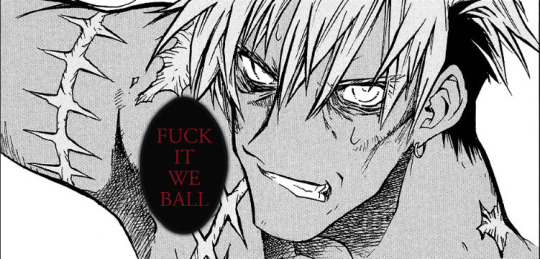
Rule #1
Fight scenes MUST tell an emotional story.
A fight is just an argument but with physical violence instead of words. Just like how in a musical people talk until the energy and emotion goes so high they burst into song and then when that keeps building, they all start dancing. Same concept. People argue and disagree until the emotion is so high they start throwing hands.
Fights act like any other scene where it starts with one emotion and ends with another. Emotion should flow through each move. They should ebb and flow from start to finish, raising and lowering tension to keep a reader engaged and guessing over who is going to win.
This is the bedrock of fight scenes. No amount of “rule of cool” is going to save the scene if there is no emotional heart beating through it.
Rule #2
You need personal stakes
Goes kit and parcel with Rule #1. Your POV characters have to have something on the line to tell an emotional story.
What happens if they lose? What happens if they WIN?
Go beyond JUST “oh if they lose, they die”. What happens to the character’s world if they lose. What will happen to the ones they love when they’re gone? What are the TRUE long term consequences for failure?
Even if it's a friendly (ie non lethal) competition scene, what are those stakes? Bragging rights for a proud character? Or perhaps taking their opponent down a peg?
Avoid vague generalized stakes and find what makes it personal. A knight may fight for his king and country but he also does it because he has his pride as a knight on the line if he walks away or loses.
Rule #3
Pacing is key
Action is fast paced in real life. It should be so in writing.
I personally think of my fight scenes as if they were a movie/show/play fight scene. Partly because that’s my own personal experience and partly because it helps me with pacing, especially with multiple POV characters.
Don’t spend too long on one action. Keep it flowing but have moments of pause. Real fights have moments where someone needs to pick themselves back up or two opponents need to steady themselves for the next round of assault. Use those moments to dig into the introspection of the POV. Your reader is also gonna need a breather from time to time.
With multiple POVs, I flip through them like I’m switching shots on film. We cut away from one thing to see what another character is up to in the flow of things. I flip the camera at moments of triumph or tension to keep building that emotion.
Rule #4
Let your heroes take some hits
Show off those stakes by letting your big bad character get his ass kicked a little bit.
Let ‘em get knocked around a bit to build that tension within a reader. Make them wonder how they’ll pull this off.
Superman fights are so easy to be boring because he’s basically invincible. We all yawn because we know he’s gonna win. Then along comes someone with kryptonite and suddenly it's Superman getting the beat down. Now we’re emotionally engaged because how is he going to get out of this one?
Show their competency in a fight by how well they can take big, painful hurts and keep going anyway. Show it in how they fight back or stay standing, despite the effort.
And don’t be afraid to let your heroes lose a few times. It makes their eventual victory sweeter.
Rule #5
Be clear and concise with your descriptions
Now ain’t the time to pull out your best Tolkien describing a meal impressions.
Action is fast. There are a ton of moving parts which can be severely complex and hard to follow. You want to avoid this confusion at all costs.
Use clear, specific language so the reader can visualize what is happening in their head and not get lost. Once they get lost, they will get frustrated and disengage.
Ditch the heavy metaphors. Let the movement speak for itself as the allegory. If you want to sprinkle in some flowery language, do so separate from the actual action happening in a fight.
Rule #6
Learn the basics of movement
You don’t need to know how to swing a sword with proper technique to write a sword fight (though, let’s be real, it helps). As long as you understand the fundamentals of how the weapon moves, you can write a good sword fight.
Because what makes a fight good is the EMOTION in the fight. Not just the fancy flourishes.
However, if you go too crazy and it becomes unrealistic, your readers can easily disengage.
So you don’t need to know the difference between a riposte and an ochs stance. You just need to know that arms don’t swing that way. You need to know if someone gets pushed, it can throw them off balance.
Learn the basics of human movement, and if there are weapons involved, learn at least the basics because if I see one more person say they’re wielding a longsword like it’s a small sword, you people will kill me inside even more.
Rule #7
Every action has a consequence
When someone attacks, someone has to defend (or get hit). But when someone moves their body one way, it can open them up to a counterattack.
If I lunge too far forward and overextend, I’ve left myself open for attack. If an opponent turns around, their back is now my next best target.
Pay attention to how your characters are moving. Are they opening themselves up for easy counterattacks when you don’t want them to?
Thinking about what opening a move gives their opponent can help you write your fight scenes, as it will lead to a natural flow and chain of events.
Rule #8
Don’t be afraid to add sound
Fights are vocal. People grunt and groan and shout when they’re hit. They also make noise when they attack. The more wrapped in emotion, the louder and noisier people tend to get as they get lost in it.
During those moments of pause you add from Rule #3 is a great moment for characters to continue the verbal part of their argument
��If one character temporarily overpowers the other, let them brag. If one character gets punched in the mouth, describe the sound of the blood they spit on the ground.
Just, for the love of the gods, don’t go all Marvel and be quip central. Don’t undercut your own tension and emotion for a quick laugh or to sound cool.
Some examples of great fights:
youtube
youtube
#go forth and conquer friends#writing fight scenes#kuro writes#writing#writers on tumblr#fight scenes#story telling#action scenes#writing tips#writing advice#Youtube
91 notes
·
View notes
Text
I’m tired of the random takes I see that writing fiction about pain is boring and basic. It might be to some people, but that doesn’t make it universal! There is a place for pain in storytelling. Life isn’t all sunshine and butterflies all the time, and some people know that very intimately. People need catharsis and that can look different for everyone. Writing can be about the human experience, and the human experience has pain in it. Just stop acting like certain types of fiction are inherently better than others. Please enjoy your fluff. Don’t use your enjoyment of fluff to call other fiction immature and pointless.
339 notes
·
View notes
Text

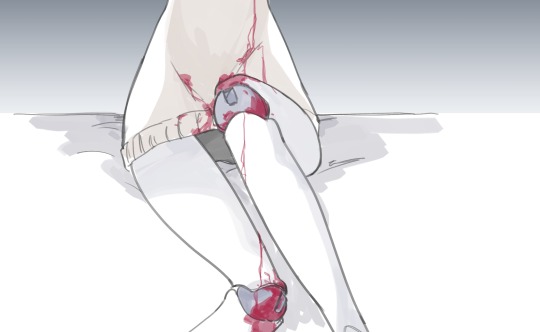


566 notes
·
View notes
Text

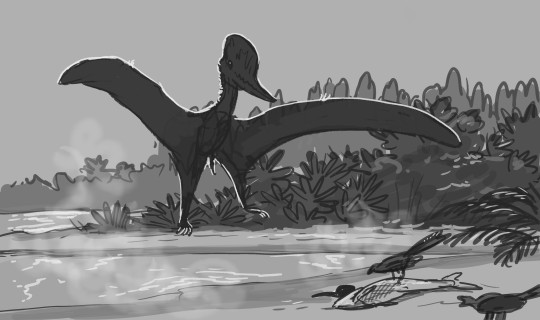
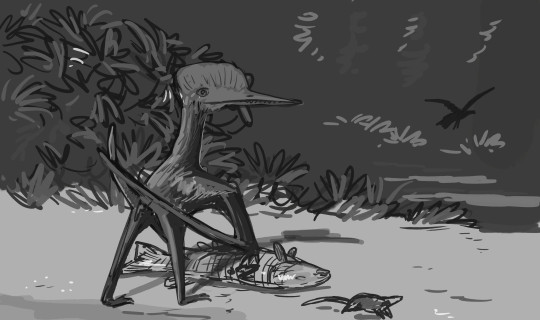
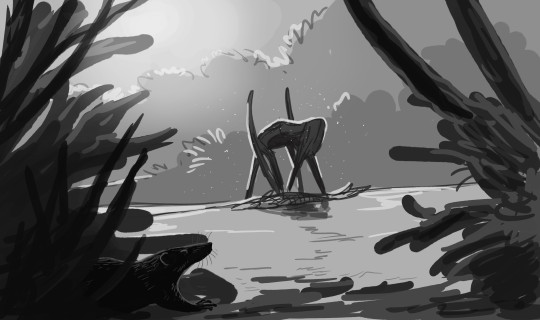
Third #JurassicJune post We follow a large dsungaripterid up the coast until we arrive in the estuaries of Guimarota. It uses it's size to scare off some Archaeopteryx relatives and a Haldanodon from a Lepidotes carcass. As the sun sets others await their share.
#sciart#paleoart#paleostream#palaeoblr#dinosaur#dinosaurs#jurassic#pterosaur#guimarota#story telling
228 notes
·
View notes
Text
>you lower your head and touch the tip of the nomad's beak
>you put the palm of your hand against the side of its head, tenderly

the nomad closes its eyes and presses its forehead against yours, and the world explodes behind your rotting eye lids. flashes of pink, white, and red streaking over a stream of technicolours. your heart bursts with hope, like the first time you'd ever seen fireworks, like the furtive joy of being-let-in-to-a-love-larger-than-life. a warm taste of candied ginger spreads from the tip of your tongue all the way to the back of your throat.
it ends just as quickly and suddenly as it starts. you can't just come back to life. i'm sorry, that's not how this works.
---
once upon a time there was a little girl standing by a murky pond, on the side of the road.
she was too young to understand desire, so this need, this surging, swirling temptation churning in her stomach
ladden with disgust and fright,
telling her to crush between her fingers a clump of foaming pink snail eggs resting on the stalk of a lotus
surely must be the voice of the devil.
i don't remember how the story ends. i can't tell if the girl went home that night and became a woman, or if she is still sleeping amongst the lotus roots.
----
you watch the nomad pulls away, puts its cloak back on, and resumes its walk. begrudgingly, your faltering limbs move as if of their own will, and bring you along.
as silence makes itself known like a tertiary character in a crude paperback novel, you become acutely aware of a desperate thirst. your throat is all but parched, shrivelled flesh, brittle bones; fingertips grating away with sand like chalk on the pavement.

then it appears before you. a gaping hole in the sand: a pool of water inside a black rock, an abnormal outcrop in the sea of sand. the water is crystal-clear and so perfectly still, its reflection of the empty sky gives the impression of an infinite pit. as casual as can be, the nomad approaches the pool and dips its beak in a few time. then it stands aside and looks at you.
without waiting for an invite, emboldened by the incredible thirst, you rush towards the water. at first you try to cup your hands to drink, but the water keeps leaking through so you abandon all attempts at etiquette and sink your head in, lapping up the water like an animal. and who cares, who cares? so beautiful, my love, as the water runs down your chin, wets your neck and splashes all over your hair.

when the thirst subsides you see a fleck of silver at the bottom of the pool. the moon, the bastard! you claw at the water, trying to catch it with your fingers. give it back, give it all back. please. please.
please.
i want to go home.
but that's not how this works.
the nomad puts its hand on your shoulder. it's time to carry on.
read the previous chapter here
story up to date here
#illustration#drawing#art#impossible nomad#fiction#writing#story telling#prose#poetry#and belated happy birthday to myself#i'm 27#and i want to be alive#poll
44 notes
·
View notes
Text
There are 5 types of character
The Coffee/Tea drinker - Sophisticated and has a braincell. These are very often mentors or the parents of the group. Very tired
The Energy Drink - High on energy 24/7 and cannot or will not calm down ever
The FUCK IT WE BALL - Nothing. These characters just wake up and go. I am perplexed by how they function
The Hot Cocoa Drinkers - The sweetest cinnamon rolls you have ever seen in your life. Will cry if yelled at. Most likely has hidden angst.
The Oh good lord - Mixes alcohol with redbull and stares you in the eye while drinking all of it at once. Lost faith in humanity a long time ago. Be afraid
#creative writing#fiction writing#writing community#writerscommunity#writers on tumblr#writeblr#writing#writer things#writers and poets#fictional characters#original character#character archetypes#Types of characters#character#Characters#character writing#story telling
60 notes
·
View notes
Text



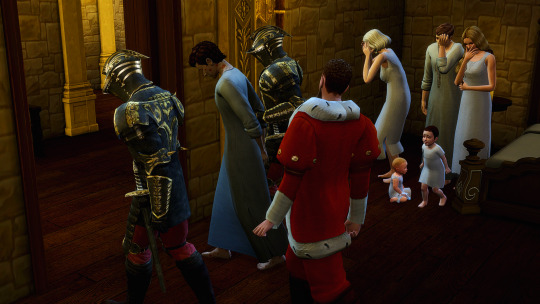


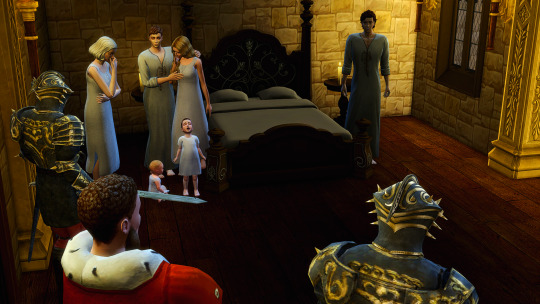
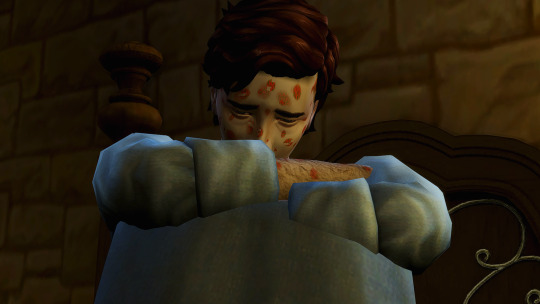



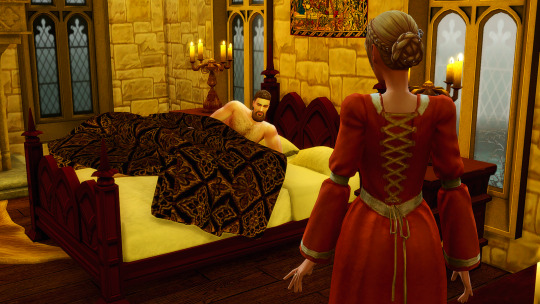

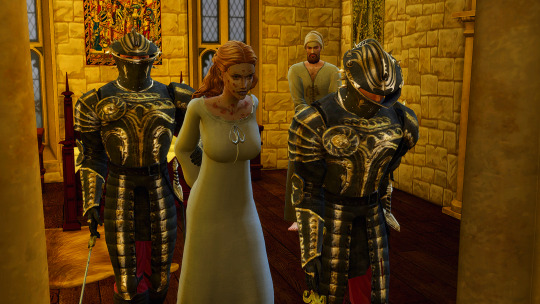



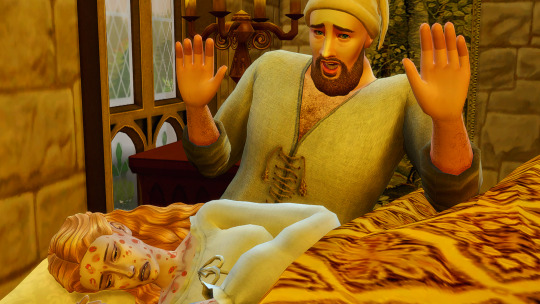
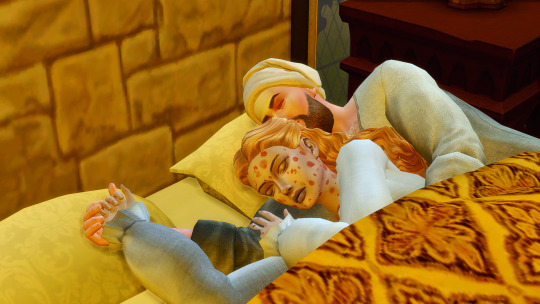
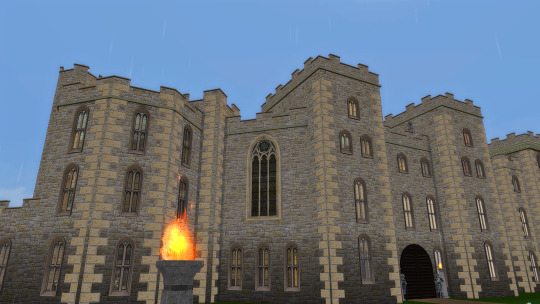
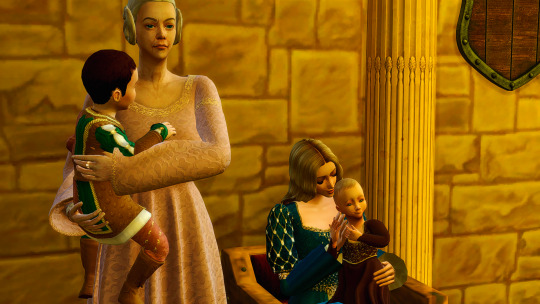
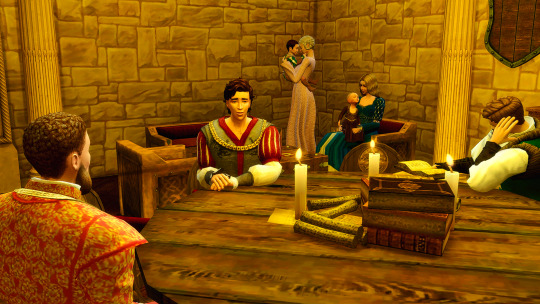
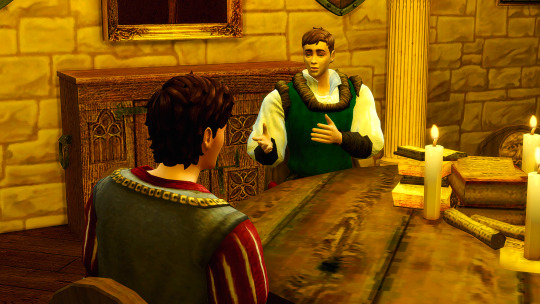


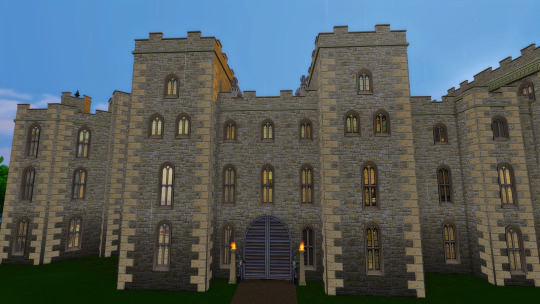


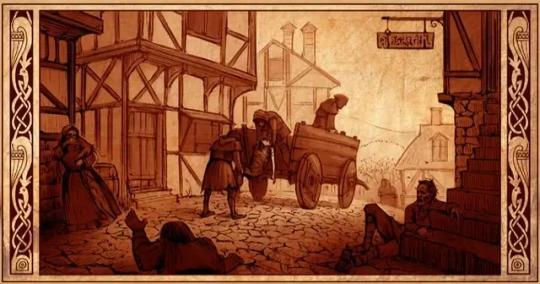
In the spring of 1348, Windenburg was crumbling under the weight of the Black Death. Countless lives succumbed to the relentless plague, streets transformed into macabre scenes of despair. The pervasive stench of burning flesh lingered. The once-thriving city now echoed with the cries of mourning, as the relentless specter of death cast a sinister shadow over every corner. The realm itself seemed to be ensnared in an earthly hell, gripped by an unforgiving fate that spared none.
The merciless plague showed no mercy, claiming victims indiscriminately, children included. Within a heartbeat, entire family legacies crumbled into oblivion. Hope and prayer, feeble defenses against an insidious foe, echoed through homes turned into sanctuaries of desperation. The haunting specter of annihilation lingered, leaving shattered lives in its wake, a testament to the fragility of existence in the relentless grip of the Black Death.
Within the walls of Windenburg Castle, now sealed and guarded, none were granted entry. King Wilhelm, in a rare act of mercy, permitted his aunt, Dorthea, and two cousins, David and Richard, to seek refuge within. Accompanied by David's wife, Corrine, and their two children, Albert and Claudine, they entered the castle grounds before the doors were sealed, shutting out the menacing cries that lurked beyond. The castle became their sanctuary, safeguarded against the relentless onslaught of the Black Death that ravaged the world outside.
Amidst the shadows of the castle, King Wilhelm, David, and Richard gathered around the round table, their countenances marked by deep concern. Expressing gratitude, Richard acknowledged Wilhelm's generosity in providing refuge and began to recount the dire situation outside the castle walls. He detailed the profound suffering endured by David, whose household had succumbed to the relentless plague, compelling them to seek sanctuary within the castle's protective walls.
Family holds an immense significance for David. In 1345, he married Corrine, the youngest daughter of the late King Thomas and the now Dowager Queen Priscilla of Bagley. Corrine is also the younger sister of Queen Cordelia. Their union, marked by profound love, resulted in a strong familial bond with their children. Additionally, David's mother, Lady Dorethea, the widow of the late Prince Arthur of Windenburg and godmother to King Wilhelm, remains a cherished and vital part of their family structure.
On a fateful morning the following summer, King Wilhelm lay in the opulent confines of his bedchambers with Anne Matthews, his beloved mistress, as was his nightly routine. Unbeknownst to him, the looming horror of the black death was about to unravel. As Wilhelm awoke, the dim light filtering through heavy drapes revealed a ghastly sight, the telltale markings of the plague adorned Anne's body. Shock and terror gripped him instantly, and with a frantic urgency, he leaped from his bed, jolting Anne awake in abrupt dismay.
Wilhelm, stricken with terror, recoiled at the ghastly sight before him. Unable to bear looking directly at Anne, he pointed with dread to the markings of the plague that marred her once-vibrant skin. His voice trembled with fear as he uttered, "You're covered in the markings of the plague!" The shocking realization hit him like a relentless wave, and the gravity of the situation sank in. Fearful for his own health, knowing he had shared a bed with her, Wilhelm urgently called for his guards. In the midst of his panicked plea, Anne, overcome with terror, implored him to be reasonable, her pleas echoing in the dimly lit chamber.
With a sense of urgency, the guards burst into Wilhelm's chambers, swords drawn, catching Anne off guard. She stood momentarily frozen, the cold glint of steel sending shivers down her spine, before collapsing to her knees in a desperate plea. "Please, Wilhelm, spare me. I am so very frightened," she implored, her voice quivering with terror. Wilhelm, torn between mercy and the harsh reality of the plague, couldn't bring himself to order her immediate execution.
Instead, he directed his guards to escort her down to the dungeons of the castle. Within those dark, damp confines, nobles and staff alike languished, a haunting testament to the unyielding grip of the deadly contagion. The decision weighed heavily on Wilhelm, his actions a desperate attempt to contain the spread within the castle.
Witnessing Anne's fate, Wilhelm confronted the harsh reality of the plague's rapid grasp. Fearing for his own life, he swiftly left to be bathed, his clothes and bedding consigned to the flames, a desperate attempt to purge any potential contamination.
With his mistress gone, Wilhelm, confronted with the stark reality of the abstinence he would face in the wake of this disease, summoned Cordelia to his chambers. He felt that Cordelia's presence could provide solace amid the pandemics chaos. As she reluctantly joined her estranged husband, the atmosphere grew thick with sorrow and uncertainty.
As the chilling winds of the plague swept through the land, Cordelia, existing in the shadow of profound despair that enveloped the realm, discovered the presence of new life within her. In the midst of death's unrelenting dance, the prospect of impending motherhood emerged as a luminous beacon of hope, casting its feeble light against the oppressive darkness.
As the winter of 1348 approached, the grip of the plague tightened its hold. Corrine awoke in her chambers to a harrowing sight. Her beloved husband, David, cloaked in the ominous markings of the deadly affliction. A primal scream escaped her lips, shattering the cold silence of the castle. The chilling wail reverberated through the stone walls, rousing the family from their uneasy slumber. Lady Dorthea crumpled to the floor in anguish at the sight of her son. Emotions ran high, unsettling the young children, as David sat, helpless and defeated, huddled in his bed, grappling with the cruel hand fate had dealt him.
Soon after Corrine's anguished screams pierced the air, the castle guards, accompanied by King Wilhelm, arrived at the chamber doors. With an air of trepidation, they entered the room, the heavy doors swinging open to reveal the somber scene within. The family, gripped by fear and uncertainty, stared at the intruders, their collective breaths held in suspense, awaiting the unfolding of the inevitable.
Dorthea, overcome with desperation, rushed toward King Wilhelm, her eyes pleading for mercy. The vigilant guard, wielding his sword as a stern barrier, halted her advance. She sank to her knees, tears streaming down her face, as she implored, "Please, Wilhelm, as your godmother, I beseech you. Spare my son. Remember the bond you shared with Arthur; David carries a piece of him." Wilhelm, confronted by Dorthea's tearful plea, met her gaze with an unusual expression of sorrow.
He extended a solemn promise, assuring her that David would not face execution. Instead, he would be confined to isolation, receiving care from the castle's physicians. Overwhelmed with grief, Dorthea approached Richard with tear-filled eyes, her voice silenced by the weight of despair. The knights gathered around David, whose family was enveloped in sorrow. Sobbing echoed through the chamber as the guards escorted him away, his two-year-old son, Albert, calling out for his papa in bewildered innocence, unaware of the grim reality unfolding before him.
With somber determination, the knights guided David through the echoing corridors of the castle, each step carrying the weight of impending doom. As they descended into the depths, the cold dungeons of Windenburg Castle greeted them. The air was thick with the stench of despair, and David was thrown into a bleak cell, surrounded by others afflicted by the cruel grasp of the plague. The door slammed shut, sealing him in darkness. David stood amidst the chilling silence, fear etched across his face as he confronted the grim reality of his uncertain fate, staring directly into the eyes of death itself.
#simsmedieval#royalsims#sims4#windenburg#royal#sims#gameofthrones#thesimsmedieval#royalty#simsstory#story telling#short story#ts4 story#story#sims 4 story#original story#stories#storytime#narrative#fiction#the sims#sim legacy#royalty sims#historical sims#sims 4#simblr#sims 4 gameplay#sims 4 cc#sims 4 screenshots#my sims
57 notes
·
View notes